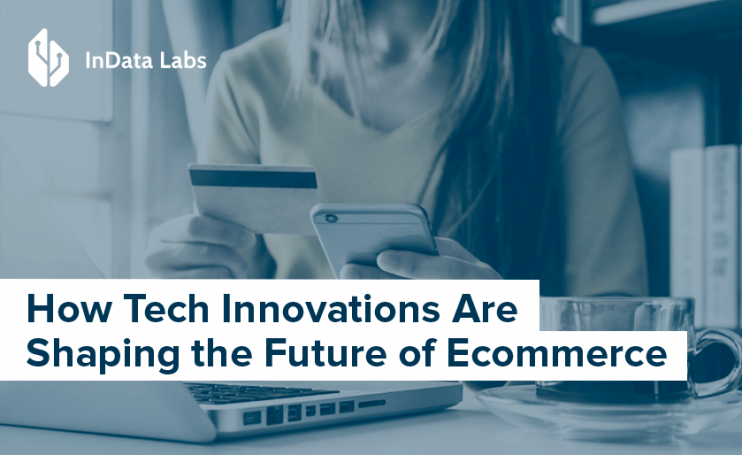Being able to clearly estimate the future of ecommerce allows the sellers of today to get ahead of the curve, and the key indicator is the advancement of technology. After all, though it seems pedestrian today, ecommerce itself was a consequence of technological progress.
Before the internet moved from a curious concept to a practical reality (albeit with noisy dial-up modems and a limited user base), the best anyone could hope for when it came to remote purchasing was placing an order through a phone call — not a very scalable model — or using a mail-order system that would secure the desired item in very sluggish fashion.
This is notable because it was the early adopters of the tech world that really pushed the industry along, and that focus on embracing new possibilities has never gone away. Other industries are more reluctant, waiting to see how things perform before they’re willing to try them — but there are many online sellers who’ll get experimental if there’s a chance they can profit.
Today, then, we’re still seeing the ecommerce industry shift in interesting ways as a result of technological progress, and we can arrive at some notable predictions through paying attention. In this post, we’re going to look at some of the main ways in which tech innovation is making waves in the online retail world and shaping ecommerce futures:
Location Tracking Is Enhancing Marketing
At first, ecommerce was all about making location essentially immaterial: shoppers didn’t need to visit stores or even be in particular areas to buy. Provided they didn’t live entirely off the grid, they could get whatever they needed shipped to them from a central warehouse. The online and offline retail worlds were in competition: the former gained ground, but the latter retained value.
The current trend, though, is developing hybrid retail: a system that sees businesses provide their wares flexibly to attract as many customers as possible. Consider the popularity of the click-and-collect option. Sometimes people want to order online but don’t want to wait to receive their orders (and risk missing them entirely due to unfortunate delivery timing). The future of ecommerce will see buyers empowered to buy as they prefer.

Source: Unsplash
Companies with physical stores and online operations aren’t stopping there, though: they’re using the location tracking provided through mobile devices to enhance their marketing. Proximity marketing, a system that makes it possible to automatically message mobile users when they enter or exit particular areas, is one of the best ways to reach new people: any worthwhile deal will be more tempting when the recipient knows they’re close to the store.
Machine Learning Is Improving Stock Management and Shipping
Handing stock efficiently has always been a difficult task for ecommerce sellers. They can’t simply get away with citing low stock as traditional retailers can: their customers expect them to always have supply, and will think less of them when they run low. But if they bring in too much stock — more than they can sell — then they’ll lose money.
Through deploying machine learning algorithms that closely analyze historical order data and monitor the market to see how consumer interest is waxing and waning, today’s retailers can automatically optimize their inventory management. This is one of the main ecommerce trends for the future, and for good reason: finding a strong balance between too much and too little can yield maximum profitability and keep customers happy.
Note that it isn’t simply a matter of crunching the numbers and passing the information to workers: the focus on automation can be (and already is) extended to the physical stock management process. Back in 2018, Chinese logistics firm Cainiao (mostly owned by ecommerce company Alibaba) opened a warehouse using 700 automated guided vehicles: as CNBC put it, they are “robots that can automatically pick up a parcel and deliver them to another part of the warehouse where it is then picked up by a delivery firm”.

Source: Unsplash
With such robots being equipped with wide-ranging IoT connectivity, they can seamlessly share information to be processed in the background. Overarching systems can then calculate the optimal routes for them to take, ensuring that the shipping process goes as smoothly as the inventory management process.
NLP Is Providing Scalable Customer Support
The matter of how to improve ecommerce customer service is a persistent priority because customer support is essential for driving all-important customer loyalty — and the answer is NLP technology. NLP, meaning natural language processing, has advanced enormously over the last decade in particular. Just as it’s helping stock management, machine learning has overhauled NLP through analyzing vast quantities of human conversations, and this has turned chatbots from novelty distractions to tools with legitimate utility.
Chatbots aren’t really smart in the sense that they don’t really understand what people say, but it doesn’t matter all that much. Using clearly-defined patterns of interaction, they can parse queries and provide appropriate responses: this makes them perfect for basic customer service matters because they can deal with simple concerns and pass any problems they can’t suitably interpret to human support assistants (achieving the aforementioned balance).

Source: Unsplash
An online store that relies entirely on human assistants will always be limited in how many customers it can help (and at what times, since people can’t work 24/7 and it’s expensive to have well-trained assistants active at all hours). The immense growth of ecommerce chatbots, then, should come as no surprise. Throw in a chatbot that can scale indefinitely given adequate computing power and never tires, and it’s possible to establish a great system that makes the most out of artificial and natural intelligence.
How to Improve Ecommerce
It’s abundantly clear that the future of ecommerce from an organizational standpoint will concern the optimal use of human resources. Any task that can be automated should be automated, as this will allow human effort to go towards the areas that require creativity and nuance. Marketing ideation is a solid example of such a task. While a computer system can generate keywords and spool out concepts based on existing concepts, there’s no understanding involved.

Source: Unsplash
Consider the systems that have been designed by OpenAI to do things including generate text and music from samples. The results are technically competent, but creatively bankrupt. Maybe one day there will be a quantum computer capable of accurately replicating the human thought process, but it’s unlikely to happen in the coming decades. Ecommerce future technology will steadily account for the repetitive tasks, leaving people to handle everything else.
Ecommerce is always going to show the way when it comes to the future of technology. At the moment in time, there are sellers out there doing fascinating and bizarre things that probably won’t work but push things forward regardless. Take VR, for instance: it’s still viewed as a gimmick, but when it eventually does become mainstream, might it be the ecommerce industry that manages it? It wouldn’t be wise to bet against it.
If you are planning to implement AI into the ecommerce projects, have a look at the versatile infographic below:

Start your Next AI Project with InData Labs!
Have a question? Contact us at info@indatalabs.com. We’ll gladly discuss the opportunities for cooperation.



